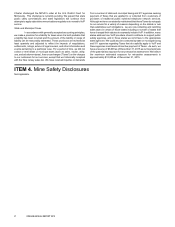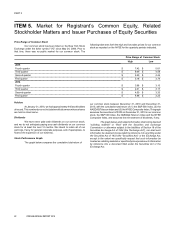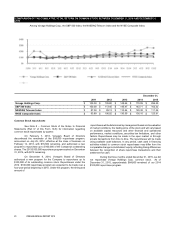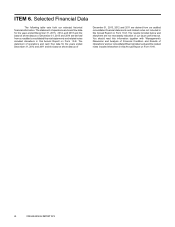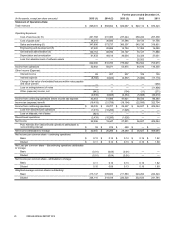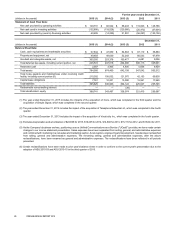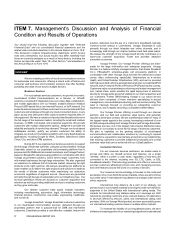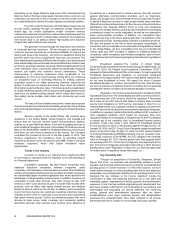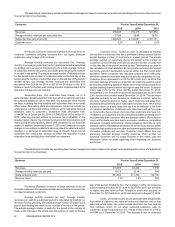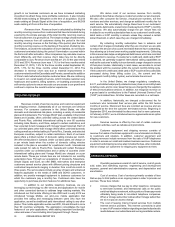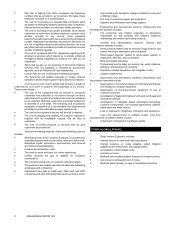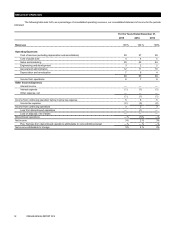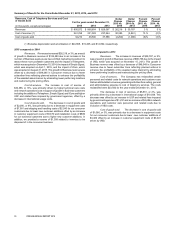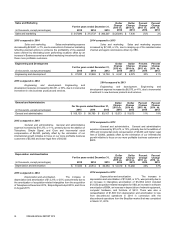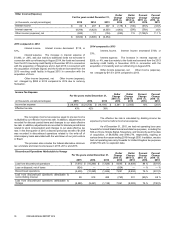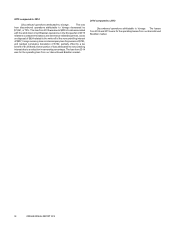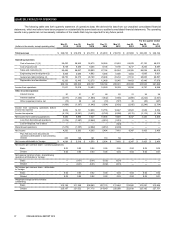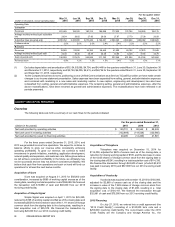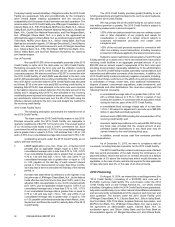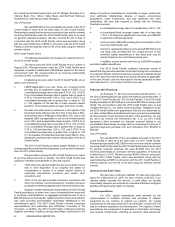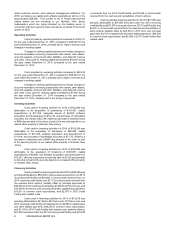Vonage 2015 Annual Report Download - page 37
Download and view the complete annual report
Please find page 37 of the 2015 Vonage annual report below. You can navigate through the pages in the report by either clicking on the pages listed below, or by using the keyword search tool below to find specific information within the annual report.
31 VONAGE ANNUAL REPORT 2015
>The cost of leasing from other companies the telephone
numbers that we provide to our customers. We lease these
telephone numbers on a monthly basis.
>The cost of co-locating our regional data connection point
equipment in third-party facilities owned by other companies,
Internet service providers or collocation facility providers.
>The cost of providing local number portability, which allows
customers to move their existing telephone numbers from
another provider to our service. Only regulated
telecommunications providers have access to the centralized
number databases that facilitate this process. Because we
are not a regulated telecommunications provider, we must
pay other telecommunications providers to process our local
number portability requests.
>The cost of complying with FCC regulations regarding VoIP
emergency services, which require us to provide enhanced
emergency dialing capabilities to transmit 911 calls for our
customers.
>Taxes that we pay on our purchase of telecommunications
services from our suppliers or imposed by government
agencies such as Federal USF and related fees.
> License fees for use of third party intellectual property.
> The personnel and related expenses of certain network
operations and technical support employees and contractors.
Cost of goods sold. Cost of goods sold primarily consists of
costs that we incur when a customer first subscribes to our service.
These costs include:
>The cost of the equipment that we provide to consumer
customers who subscribe to our service through our direct
sales channel in excess of activation fees when an activation
fee is collected. Business customers' purchased equipment
is recorded on a net basis. The remaining cost of customer
equipment is deferred up to the activation fee collected and
amortized over the estimated average customer life.
>The cost of the equipment that we sell directly to retailers.
>The cost of shipping and handling for customer equipment,
together with the installation manual, that we ship to
customers.
>The cost of certain products or services that we give
customers as promotions.
Sales and marketing expense. Sales and marketing expense
includes:
>Advertising costs, which comprise a majority of our sales and
marketing expense and include online, television, direct mail,
alternative media, promotions, sponsorships, and inbound
and outbound telemarketing.
>Creative and production costs.
>The costs to serve and track our online advertising.
>Certain amounts we pay to retailers for activation
commissions.
>The cost associated with our customer referral program.
>The personnel and related expenses of sales and marketing
employees and contractors.
>Transaction fees paid to credit card, debit card, and ECP
companies and other third party billers such as iTunes, which
may include a per transaction charge in addition to a percent
of billings charge.
>The cost of customer support and collections.
>Systems and information technology support.
Engineering and development expense. Engineering and
development expense includes:
>The personnel and related expenses of developers
responsible for new products and software engineers
maintaining and enhancing existing products.
General and administrative expense. General and
administrative expense includes:
>Personnel and related costs for executive, legal, finance, and
human resources employees and contractors.
>Share-based expense related to share-based awards to
employees, directors, and consultants.
>Rent and related expenses.
>Professional fees for legal, accounting, tax, public relations,
lobbying, and development activities.
>Acquisition related transaction and integration costs.
>Litigation settlements.
Depreciation and amortization expenses. Depreciation and
amortization expenses include:
>Depreciation of our network equipment, furniture and fixtures,
and employee computer equipment.
>Depreciation of Company-owned equipment in use at
customer premises.
>Amortization of leasehold improvements and purchased and
developed software.
>Amortization of intangible assets (developed technology,
customer relationships, non-compete agreements, patents,
trademarks and trade names).
>Loss on disposal or impairment of property and equipment.
Loss from abandonment of software assets. Loss from
abandonment of software assets include:
>Impairment of investment in software assets.
OTHER INCOME (EXPENSE)
Other Income (Expense) includes:
>Interest income on cash and cash equivalents.
>Interest expense on notes payable, patent litigation
judgments and settlements, and capital leases.
>Amortization of debt related costs.
>Accretion of notes.
>Realized and unrealized gains (losses) on foreign currency.
>Gain (loss) on extinguishment of notes.
>Realized gains (losses) on sale of marketable securities.


